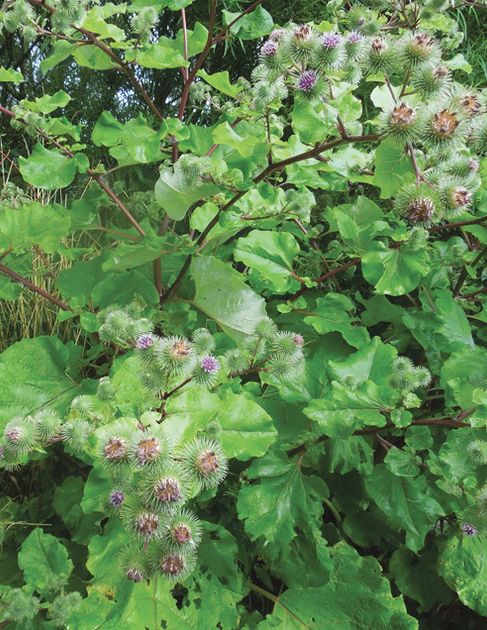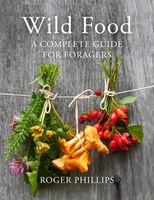Arctium minus A biennial herb found throughout the British Isles except in the Scottish Highlands, burdock occurs on waste places, waysides, scrub and woodland margins. It flowers from July to September.
The English name indicates a burr-bearing fruit of the plant and the large dock-like leaves. Matthew Robinson in The New Family Herbal says of burdock, ‘It is so well known, even by little boys, who pull off the burr to throw and stick upon one another.’ Burdock was used in early times for the treatment of leprosy and has always been considered one of the finest blood purifiers. It is still used in modern drugs for the treatment of digestive troubles and skin diseases. The roots, stems and leaves of burdock can be eaten raw or boiled and it is cultivated as a vegetable in Japan, while in the Midlands burdock beer is still popular. The young leaf stems can be collected from May onwards, the leaves picked in June and July, and the roots dug any time during the autumn. The hard outer peel of the stems should be removed to leave the soft, moist core.



